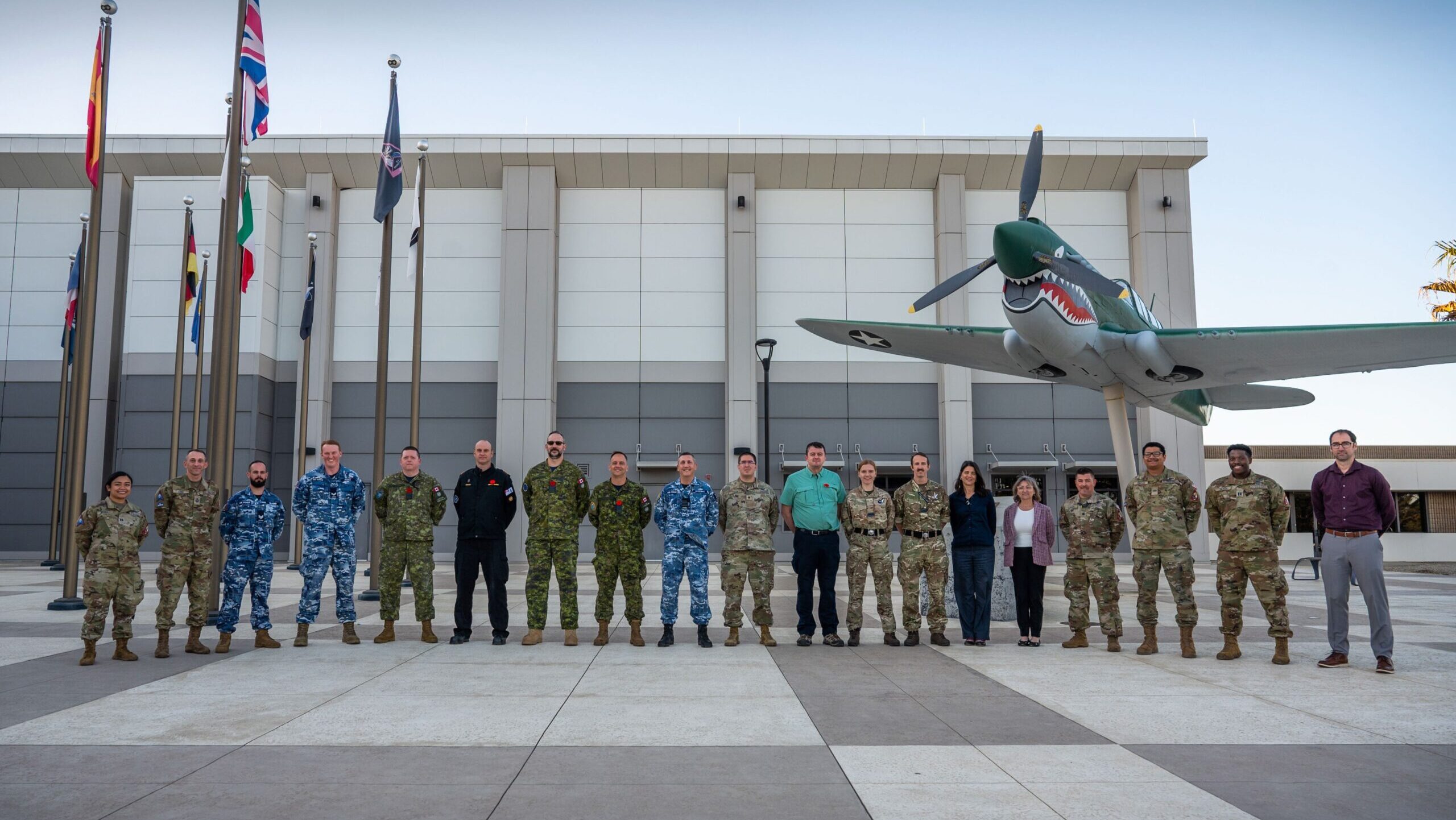Space Delta 5 and the Combined Space Operations Center, one of five centers under US Space Forces – Space, on Nov. 4-6. 2024 hosted a meeting of the Operation Olympic Defender Common Operating Picture working group at Vandenberg SFB, Calif., including Australian, Canadian and British representatives. (US Space Force photo by Tech. Sgt. Luke Kitterman)
WASHINGTON — The US and some of its closest allies in Operation Olympic Defender (OOD) this week launched “initial” efforts to create new standards for sharing space monitoring data — the necessary foundation for developing a common view of the space battlefield, according to US Space Command (SPACECOM).
Earlier this week the Space Force’s Space Delta 5 and the Combined Space Operations Center (CSpOC) “hosted a 3-day Operation Olympic Defender Common Operational Picture (COP) working group, consisting of space representatives from the Australian Space Operations Centre, Canadian Space Operations Centre and United Kingdom National Space Operations Centre,” SPACECOM said in a press release Thursday.
Operation Olympic Defender is the US military’s plan for space warfighting, alongside a select group of key allies.
“It’s essential that the [Olympic Defender] allies and partners have a shared understanding of the battlespace, to ensure mission impacting decision-making is based on common perceptions of what’s occurring and likely to occur in the Area of Responsibility,” said Royal Australian Air Force Group Captain Julien Greening, CSpOC deputy director.
Space Delta 5’s mission is to “prepare, present, and fight” forces to SPACECOM for “operational-level command and control,” according to SPACECOM’s website. SPACECOM’s CSpOC brings together the US, Australia, Canada, France, Germany, New Zealand and the United Kingdom to collaborate on space command and control. Both organizations are located at Vandenberg SFB, Calif. Since July, Col. Justin Sorice is double-hatted as commander of both.
As of last month, the same group of countries also are members of Operation Olympic Defender.
At a meeting last year, the Operation Olympic Defender allies agreed on the need for commanders to be able to collectively see what is happening in space at the same time. At the meeting this week, the working group reviewed “risks and mitigations, refined the concept of operation, and update the plan to develop a shared Space COP,” the SPACECOM press release explained.
Further, the group also “reviewed and contributed initial requirements and identifying standards to cooperatively produce shared situation understand of the space environment,” the release said.
“The team will build on data provided by the US Space Surveillance Network and utilize the existing Global Command and Control System – Joint, as the initial means of generating and displaying space track information integrated with available intelligence and environmental information, to provide the user a fused battlespace picture,” it added.
Both the UK and Australia are in the process of standing up two of three planned sites for the US Deep Space Advanced Radar (DARC) to track satellites and dangerous space junk in far away orbits with more precision. (The third site will be in the US.) The first radar, in Western Australia, will become operational in 2026; all three are expected to be online by 2030.
Canada is at the start of an effort to develop a successor to its aging Sapphire satellite that keeps tabs on the heavens. The project, called “Surveillance of Space 2,” is expected to cost as much as $250 million CAN to $499 million CAN ($180 million USD to $358 million USD), according to a Ministry of Defence fact sheet.











